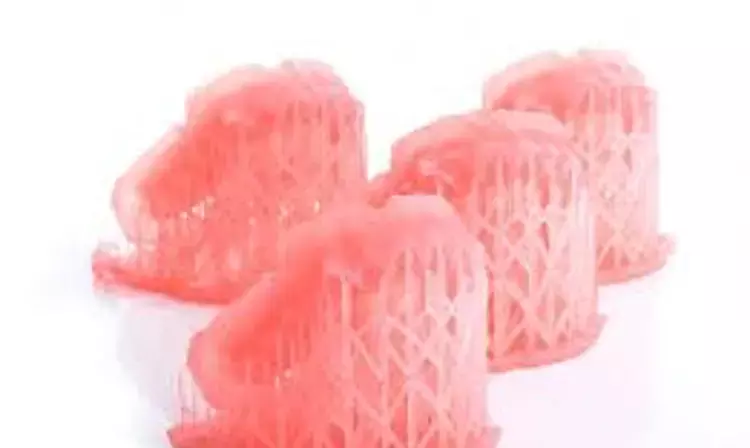- Home
- Medical news & Guidelines
- Anesthesiology
- Cardiology and CTVS
- Critical Care
- Dentistry
- Dermatology
- Diabetes and Endocrinology
- ENT
- Gastroenterology
- Medicine
- Nephrology
- Neurology
- Obstretics-Gynaecology
- Oncology
- Ophthalmology
- Orthopaedics
- Pediatrics-Neonatology
- Psychiatry
- Pulmonology
- Radiology
- Surgery
- Urology
- Laboratory Medicine
- Diet
- Nursing
- Paramedical
- Physiotherapy
- Health news
- Fact Check
- Bone Health Fact Check
- Brain Health Fact Check
- Cancer Related Fact Check
- Child Care Fact Check
- Dental and oral health fact check
- Diabetes and metabolic health fact check
- Diet and Nutrition Fact Check
- Eye and ENT Care Fact Check
- Fitness fact check
- Gut health fact check
- Heart health fact check
- Kidney health fact check
- Medical education fact check
- Men's health fact check
- Respiratory fact check
- Skin and hair care fact check
- Vaccine and Immunization fact check
- Women's health fact check
- AYUSH
- State News
- Andaman and Nicobar Islands
- Andhra Pradesh
- Arunachal Pradesh
- Assam
- Bihar
- Chandigarh
- Chattisgarh
- Dadra and Nagar Haveli
- Daman and Diu
- Delhi
- Goa
- Gujarat
- Haryana
- Himachal Pradesh
- Jammu & Kashmir
- Jharkhand
- Karnataka
- Kerala
- Ladakh
- Lakshadweep
- Madhya Pradesh
- Maharashtra
- Manipur
- Meghalaya
- Mizoram
- Nagaland
- Odisha
- Puducherry
- Punjab
- Rajasthan
- Sikkim
- Tamil Nadu
- Telangana
- Tripura
- Uttar Pradesh
- Uttrakhand
- West Bengal
- Medical Education
- Industry
New technique most precise in the fabrication of complete denture metal bases: Study

The stereolithography apparatus (SLA) technique is the most precise and best method for denture base fabrication, as per a recent study published in the Journal of Prosthetic Dentistry.
Conventional fabrication of complete denture metal bases is being replaced by the computer-aided design and computer-aided manufacturing (CAD-CAM) systems. However, a comparative analysis of subtractive and additive CAD-CAM manufacturing techniques is lacking.
The purpose of this in vitro study was to compare the adaptation of complete denture metal bases fabricated by milling (subtractive manufacturing) and stereolithography apparatus (SLA) and digital light processing (DLP) (additive manufacturing).
Thirty metal bases were manufactured by using the milling (MIL group), SLA (SLA group), and DLP (DLP group) techniques. The silicone replica technique was used to evaluate the adaptation of the complete denture metal bases, and 30 silicone blocks were fabricated. The silicone block was cut equally in the canine, first molar, and second molar areas. The gap between the model and the metal base was measured by using a digital microscope at the 3 locations, and the measured data were statistically analyzed by using a statistical software program (α=.05).
The Results of the study are as follows:
The gaps measured at the 3 areas showed significant differences in all 3 groups (P<.05). At the anterior, middle, and posterior areas, the SLA group showed the narrowest gap (302 ±31 μm, 241 ±39 μm, 201 ±43 μm, respectively). The SLA group also had the narrowest total gap of the metal bases (218 ±33 μm).
Thus, the researchers concluded that the adaptation of the fabricated metal bases varied significantly across the techniques used but fell within a clinically allowable range. The SLA group was the most precise in the fabrication of complete denture metal bases. Further studies are required to analyze the effects of the layer thickness setting, wax elimination, and casting temperature on the adaptation of metal bases manufactured by using SLA.
Reference:
Evaluation of the adaptation of complete denture metal bases fabricated with dental CAD-CAM systems: An in vitro study by Seung-GyuYou et al. published in The Journal of Prosthetic Dentistry.
https://doi.org/10.1016/j.prosdent.2020.01.039
Dr. Shravani Dali has completed her BDS from Pravara institute of medical sciences, loni. Following which she extensively worked in the healthcare sector for 2+ years. She has been actively involved in writing blogs in field of health and wellness. Currently she is pursuing her Masters of public health-health administration from Tata institute of social sciences. She can be contacted at editorial@medicaldialogues.in.
Dr Kamal Kant Kohli-MBBS, DTCD- a chest specialist with more than 30 years of practice and a flair for writing clinical articles, Dr Kamal Kant Kohli joined Medical Dialogues as a Chief Editor of Medical News. Besides writing articles, as an editor, he proofreads and verifies all the medical content published on Medical Dialogues including those coming from journals, studies,medical conferences,guidelines etc. Email: drkohli@medicaldialogues.in. Contact no. 011-43720751


